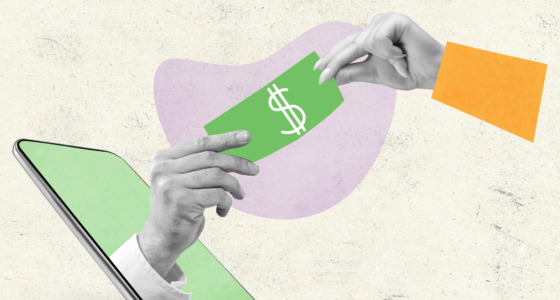

The underlying theory behind backtesting is that a strategy that performed well in the past is likely to perform well in the future. And the other way around — a strategy that worked poorly is likely to work poorly going forward.
You need to be careful about seeking patterns, though, because there is a phenomenon called the “clustering illusion.” One of the most amusing examples of it is a 10-year-old sandwich that supposedly had the face of the Virgin Mary. That said, the sandwich was sold on eBay for $28,000, so it could be worse.
This article will teach you how to work with patterns in an unbiased way. Find out the steps involved in backtesting, what kind of data is obtained, and how to put it to use.
Step 1. Define the rules you’ll be testing
If you think you can make things up as you go along, you might as well not bother. To get accurate results from backtesting, you need to have established rules, including those regarding:
- Stop-losses
- Take-profits
- Entry signals
- Exit signals
If you don’t have these already, spend some time defining them. The good thing is that there are no restrictions on which strategies you can backtest, so be as conservative or as creative as you want.
Step 2. Select an asset and a timeframe
It’s better to backtest your strategy for the same instrument and timeframe that you plan to trade with real funds. You can choose any asset; just make sure you are skilled enough for a certain market.
The reason why you can’t really expect strategies to translate perfectly across markets is that there are asset-specific factors affecting trade performance. For instance, they can be supply and demand, volatility, seasonality, and external risks like regulation or political news. At the very least, select reasonably similar assets.
Step 3. Begin looking for trades manually or use the software
Most retail traders test their strategies manually. Depending on how far back you wish to go, you can look for trades from a year, a month, or a week in the past. As you can guess, looking over years of data manually and taking trades based on what they see is time-consuming and subject to human error.
So, you can try automated testing. It’s not perfect either, but it is more objective and accurate. The automated system will not be able to run itself, interpret results, or make adjustments without your involvement, so there’ll be work for you, too.

Step 4. Rerun the process
After you get the initial results, you need to confirm them over another set of data. Repeat the test at least a couple of times for different market conditions. This step helps you cut off potential bias and the random effect factor — not entirely but as much as possible.
Step 5. Analyze the results
Finally, look over the data. Determine the trading performance manually or using your testing tool by calculating the risk, return, drawdown, winning percentage, and other parameters with which you measure your strategies.
How do the gross and net returns compare with required capital? Did the strategy produce the expected outcome? If not, what can be improved?
Take into account the necessary context, such as the market environment at the time and the strategy’s unique characteristics. For example, some strategies are designed to be riskier. So, at the end of the backtest, you’ll have different thresholds of what’s considered satisfactory.
Final thoughts
Backtesting is no longer reserved for the big sharks in hedge funds. However, while this article described clear steps any trader can follow, there are numerous ways to approach it. You don’t have to copy anyone’s method — just follow the basic rules and develop your own system to assess the expected efficacy of a trading strategy.
Disclaimer: No strategy can guarantee a 100% correct outcome of the trade.








